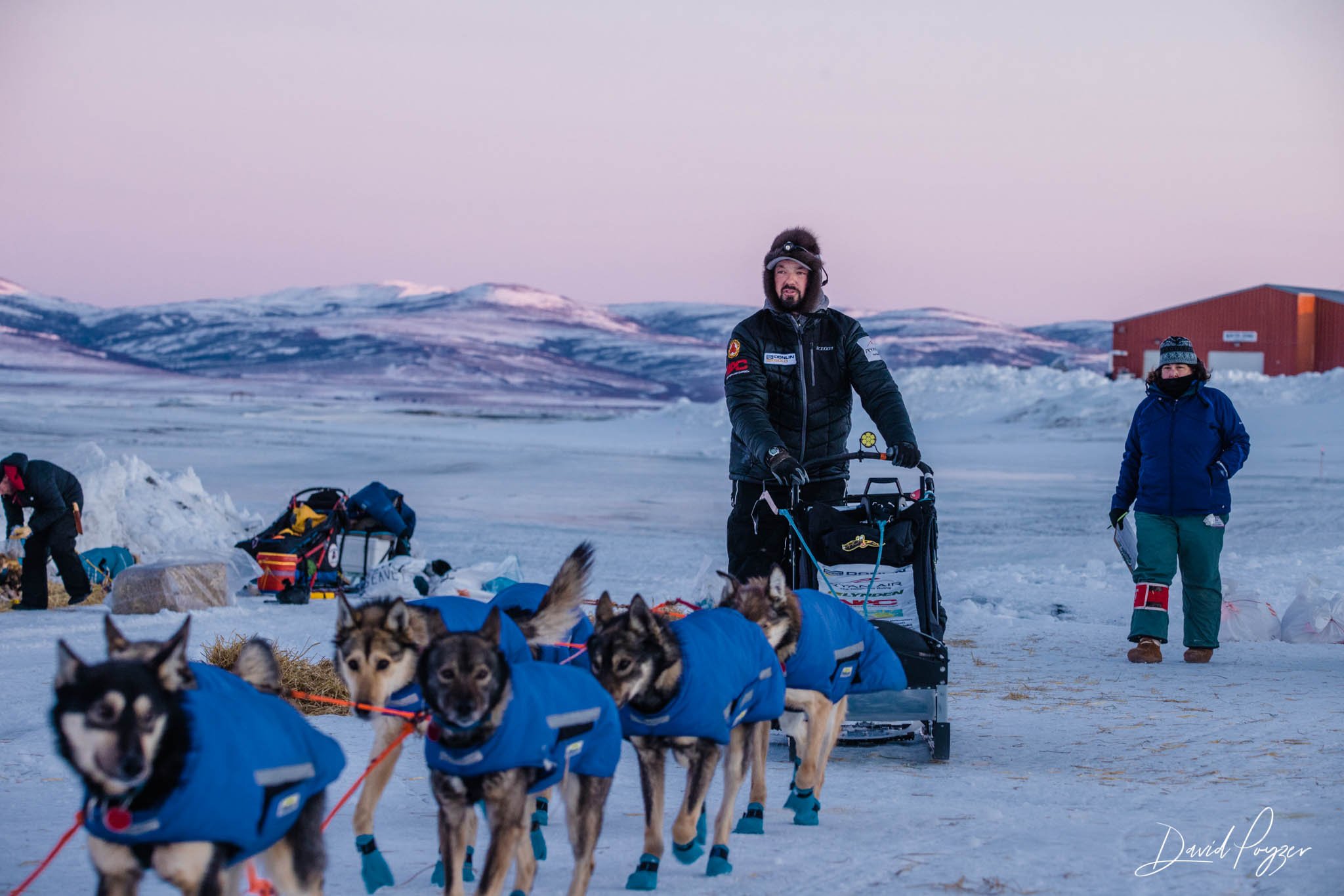The first sled dog – Chukchi Dogs
Tynenginan from Neskhan racing with his Chukchi dogs during the Nadezhda Hope race in Chukotka, Russia.
Credit: Mille Porsild – http://facebook.com/Runningsleddogs
The history of sled dog that we know begins maybe some 10,000 years ago with the oldest remains of sled dogs, more than 7000 years old, found in Russia on the other side of the Bering Strait from Alaska. The sled dog then spread from there across ‘Beringia’ when peoples crossed the gigantic steppe of what was then the Bering land bridge from Asia into North America.
The discovered dog sleds, harnesses and sled dog bones were found on Zhakhov island, an island now way out in the ocean to the west of what we today know as Chukotka.
Travel as Far East as you can in Russia, all the way to the edge of the Bering Strait, and you stand across from Alaska—in Chukotka!
Burials of ancient dogs with complete skeletons fossil dated as some 2500 years old were actually found right in Chukotka on the coastline about 80 miles (120 km) east of the community of Enmelen, in a place named Paipelgak where native people of Chukotka traditionally use to gather.
If you go to this small native Chukchi community today, sled dogs are everywhere. People here still live off the land and the ocean in a way that is not seen elsewhere in the circumpolar Arctic, with their dogs. In the spring time you will see the community empty of men now out on the flow edge where the sea ice meats the ocean, in search walrus, sleds then loaded heavy with the thousands of pounds of meat and pulled back to the community. This is the Chukchi dog at work – the oldest sled dog we know of.
A Chukchi hunting heading out to go seal hunting with his team of Chukchi dogs on a small traditional Chukchi sled with skin boat tied to the back.
Credit: Mille Porsild – http://facebook.com/Runningsleddogs
The Chukchi dog have of course evolved over time through breeding, but the Chukchi dog is in fact considered one of Earth’s Basal Breeds, believed to predominantly be an “original dog.” Only 7 Basal Breeds are said to exists in the world today…
An elegant but furry and tough Chukchi dog in action today.
Credit: Mille Porsild – http://facebook.com/Runningsleddogs
So the sled dogs came from the land that is today Chukotka during the last ice age, across the gigantic steppe that then was where there is water today making up the Bering Strait as companions to the original people that spread out and inhabited North America and the circumpolar Arctic—all the way to Greenland. So the people, the Inupiaq Eskimos in Alaska, the Inuktituut in Canada and so on, had sled dogs for eons. Fast-forward, fast, to the gold rush in Alaska, USA…
In Alaska, in the 1890’s, During the Alaskan gold rush, miners that had come to Alaska looking for gold also used traditional teams of huskies to pull themselves and their gear to the remote camps—but the demand for dogs during this time was greater than ‘the supply.’ So the miners in constant need for more dogs then brought up other breeds from the southern states. All kinds of dogs! It was actually huge business. For a tear rolling, hard-wrenching story on that, read Jack London’s “White Fang”!
By 1908, miners and other northern dwellers had begun to race sled dogs for sport and entertainment.
Credit: Anchorage Museum of History & Art. Library & Archives
Even more dogs were brought into Alaska to compete - but now they went over to the Russian side of the Bering Strait, to Chukotka, to get Chukchi dogs! These dogs were smaller in stature than what they were used to in Alaska, and because of that they were nicknamed Siberian rats.
Soon Chukchi dogs dominated racing entirely—records they set are even still standing today. These dogs included the famous Iditarod Serum run dog: Togo and Balto run by the Norwegian musher Sepalla.
Yep, Togo and Balto are Chukchi dogs. But then Chukotka was known as “Siberia” and these “Siberian rats” they became known as Siberian Huskies. And, it is from this line of dogs we now have the pure-bred Siberian Huskies. Today, Siberian Huskies that entirely trace back to the original dogs brought over at that time from Chukotka are called Seppala Siberian Huskies.
Norwegian legend Leonard Seppala with his dogs in Alaska
From that time on, the competition led to the selective breeding of the Alaskan Husky racing dog in Alaska and with some-leaps-and-bounces to what we know the Alaskan Husky as today.
The Alaskan Husky is not a “registered breed.” That means you cannot get a nice certificate on that “this is an Alaskan Husky” – that no kennel club has a registry on or give out certificates verifying that what you have is “ a pure Alaskan Husky.” And there is no “written up standards” for how an Alaskan Husky should look, weigh or behave!
The Alaskan Husky – one of, if not ‘the’ toughest competitive athlete on earth today!
Credit: Peter Varga / Tying Knots Art Studios – http://facebook/TyingKnotsArtStudios
With Alaskan Huskies, the focus is entirely on performance. Mushers over time, the last hundred years or so, have focused on breeding dogs that perform optimally in racing and that means more than to ‘run fast.’ Very black-and-white (and nothing is really black and white in the real world right!)… mushers look to five key traits:
Love to run
Appetite
Coat
Paws
Gait
Little Alaskan Husky superstars to be!
Credit: Mille Porsild – http://facebook.com/RunningSleddogs
So the traits if today’s top-athlete Alaskan Husky is a dog with a moderately dense coat for protection in arctic weather while also allowing the escape of excess heat, high pulling running enthusiasm, tough durable feet, a mental attitude and physiology adapted to high calorie intake of food, and an ability to comfortably change gaits from a walk, trot, and lope.
To get to this, over the years, continuing the Alaskan tradition that started during the gold rush actually, dogs that have nothing to do with the original Arctic sled dogs have been bred and mixed in with the Alaskan Husky. Think dogs that have a very high prey drive and drive to go-go-go, like German Shorthair Pointers that are bird dogs land, even Greyhounds!
Meet “Russeren” The 2018 Iditarod Champion lead dog that took the winning team across the finishline in what is considered the grandest sled dog race in the world – Russeren is actually ¼ Chukchi dog. His Mom, Leug, is a Norwegian very houndy sled dog out of some phenomenal bloodlines that go way back in both Alaska and Norway. His dad is “Tarzan” is ½ Alaskan Husky, ½ Chukchi dog. His mom is E6, a very traditional furry Alaskan Husky female from Norway. “Tom,” his dad, is a super-Chukchi dog born in Kamchatka south of Chukotka from the kennel of Mikael ‘Misha’ Telpin in Chukotka.
Credit: Mille Porsild – http://facebook.com/RunningSleddogs








































